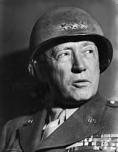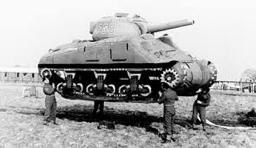Carl Kurfess’ Trivia
The Ghost Army of WWII

In spring of 1944, Allied Commander Dwight Eisenhower gave General George Patton a mighty army to spearhead the Invasion of France. The First U.S. Army group consisted of eleven divisions assembled near the White Cliffs of Dover, readying to cross the English Channel at its narrowest point and invade France at Pas-de-Calais. But this was not a real army – it was a giant con job.
The allies wanted to convince Hitler that the planned invasion at Normandy was just a diversion that the real invasion, under General Patton, would be at Pas-de-Calais.

The Ghost Army was an Allied Army tactical deception unit during World War II officially known as the 23rd Headquarters Special Troops (operation quicksilver).
Set designers from London’s Shepperton Studios were brought in to create the illusion of a massed army where there was none. They created battalions of rubber tanks, and regiments of wooden soldiers. Canvas airplanes were parked on fake runways, harbors were filled with dummy landing craft. Radio operators sent huge amounts of bogus traffic, orders to and from units that did not exist. Soldiers wore fake unit patches and drove about England simulating units that did not exist.
Sound effects of actual units were recorded and played elsewhere, simulating units that were never there. Trucks would be driven in looping convoys with just two troops in the seats near the rear, to simulate a truck full of infantry under the canvas cover. “MP’s” (Military Police) would be deployed at cross roads wearing appropriate divisional insignia and some officers would simulate divisional generals and staff officers visiting towns where enemy agents were likely to see them. A few actual tanks and artillery pieces were occasionally assigned to the unit to make the “dummies” in the distance appear more realistic.
The deceptions fooled Hitler completely. Even after the Normandy beachhead on June 6, the Germans held their Panzer divisions in reserve waiting for the real invasion elsewhere.
Works cited
Beyer, Rick. The Greatest War Stories never told; 100 tales from military history to astonish, bewilder, & stupefy. New York: HarperCollins: 2005. Print.
